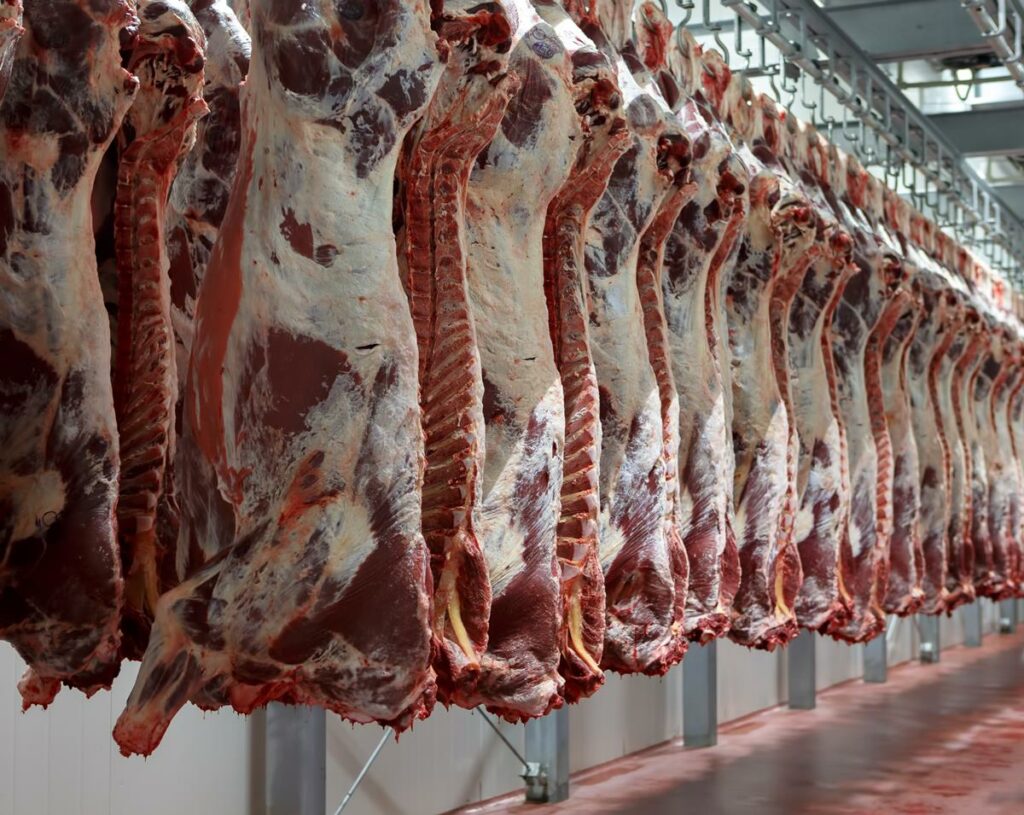For weeks now, Irish cattle prices have remained at extremely low levels and have been passed out by prices in Northern Ireland, Britain and across Europe.
Farmers took to the streets of Dublin last week in protest – to the low base quotes on offer from beef processors – and with a number of requests in relation to rural Ireland.
Looking at prices elsewhere first, according to the Livestock and Meat Commission (LMC), base quotes from the major processors remained steady last week.
The trade in Northern Ireland for prime cattle continued to show signs of improvement, with the LMC reporting R3 steer prices at 389c/kg.
Meanwhile, the R3 heifer price in Northern Ireland amounted to 393c/kg. The average young bull price in Northern Ireland also increased to 360c/kg, while the R3 young bull price decreased to 371c/kg.
The cow trade was also reported to have improved last week in Northern Ireland, with the average and O3 cow prices both increasing to 262c/kg and 294c/kg respectively.
The trade for prime cattle also improved in Britain last week, with the average steer price up to 381c/kg. The average heifer price in Britain reported a slight decrease to 379c/kg.
At home, there is little change to prices on offer this week. Prices for steers are at 345-350c/kg, while base quotes for heifers stand at 345-355c/kg.
Cow prices also remain largely unchanged and beef buyers are starting negotiations for cows at 260-270c/kg for P-grade animals. 270-280/kg is on the table for O-grade animals. 290-300c/kg is being quoted for R-grade cows.
Factories’ appetites for bulls continue to vary – with prices of 345c/kg for R grades. O-grade bulls are hovering around the 315-325c/kg mark. 350c/kg is being quoted for U-grade types.
As the factories’ pool of under-30 month cattle decreases, processors are a lot easier to deal with when it comes to slaughtering the ‘overage’ cattle backlog.
The beef kill
Official figures show that some 39,551 cattle were processed in Department of Agriculture approved beef export plants last week.
This is just 793 head behind the same week in 2018, when some 40,344 head were slaughtered. The addition of last week’s throughput brings the cumulative kill for the year – up to and including last week – to over 1.57 million head.
This is a rise of 457 head on the previous week, when 39,094 head were slaughtered.
Looking at the figures in more detail, last week’s steer and heifer supplies stood at 15,503 head and 11,472 head respectively; when combined, this represents 67.7% of the total weekly kill last week.
Cow slaughterings accounted for the third-largest segment of the kill at 8,059 head – up from 7,580 head the week previous – while young bull and aged bull throughput stood at 4,049 head and 600 head respectively.
Factories have increased their appetite for young bulls and this is evident with an extra 555 of these animals slaughtered last week.
- Young bulls: 4,049 head (+555 head or +15.8%);
- Bulls: 593 head (-7 head or -1.1%);
- Steers: 15,503 head (-341 head or -2.1%);
- Cows: 8,059 head (+479 head or +6.3%);
- Heifers: 11,295 head (-177 head or -1.5%);
- Total: 39,551 head (+457 head or +1.1%).
As mentioned above, over 1.49 million cattle have been slaughtered in Ireland this year – a fall of 58,749 head or 3.8% when compared to the corresponding period in 2018.
Throughput increases have been witnessed in the young bull, aged bull and heifer categories. However, steer throughput has declined by 47,456 head or 8%, and the cow kill is running 45,094 head behind 2018 levels.
- Young bulls: 188,678 head (+7,282 head or +4%);
- Bulls: 32,204 head (+3,568 head or +12.4%);
- Steers: 568,866 head (-46,169 head or -7.5%);
- Cows: 314,838 head (-47,229 head or -13%);
- Heifers: 456,142 head (+18,013 head or +4%);
- Total: 1,574,428 head (-60,573 head or -3.7%).


